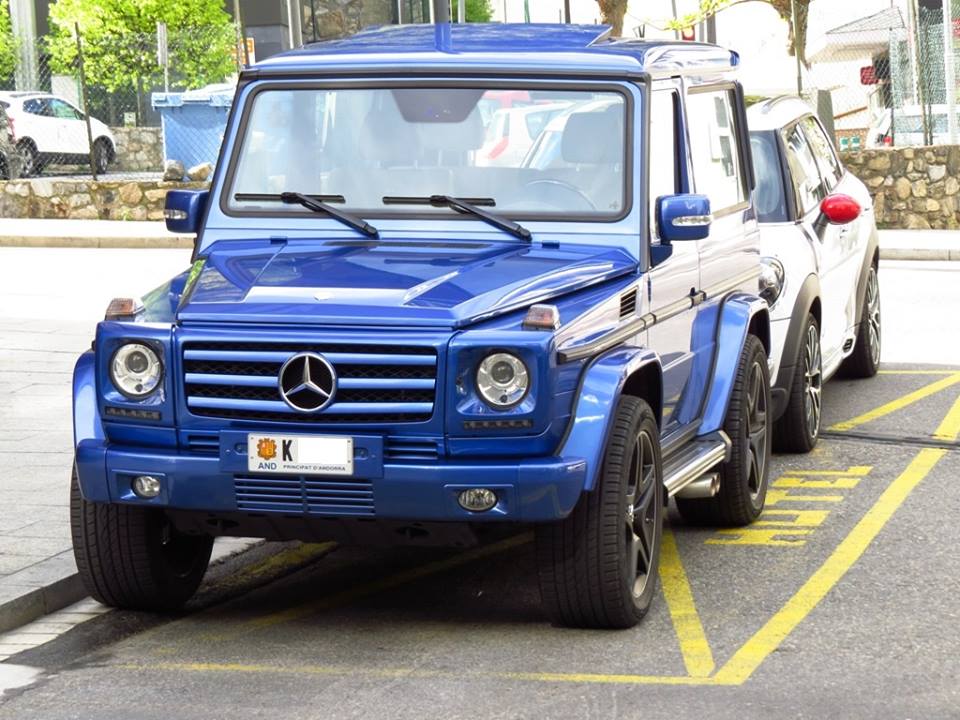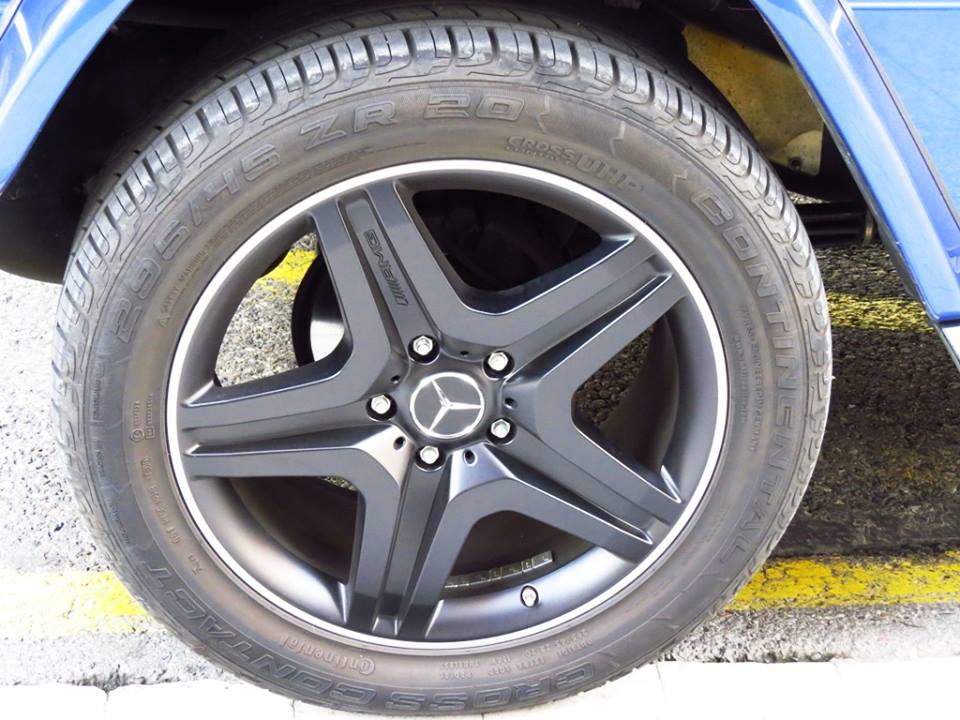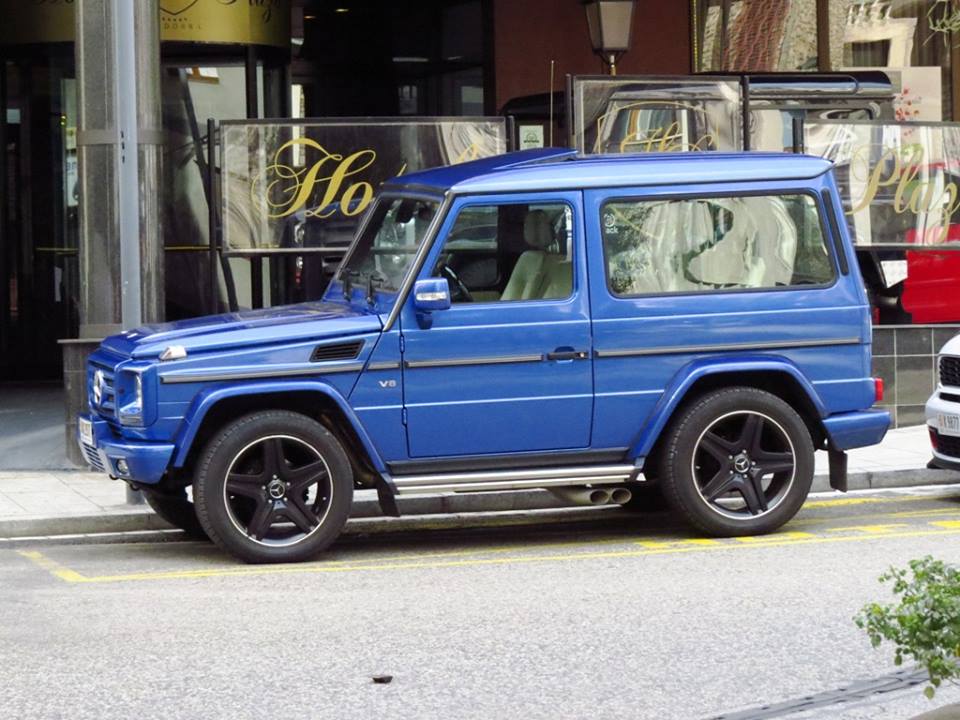Mercedes Benz G 500 V8: blue 4×4 3-doors
The Mercedes-Benz G-Class, sometimes colloquially called the G-Wagen (as an abbreviation of Geländewagen) is a four-wheel drive automobile manufactured by Magna Steyr (formerly Steyr-Daimler-Puch) in Austria and sold by Mercedes-Benz. Originally developed as a military off-roader, later more luxurious models were added to the line. In certain markets, it was sold under the Puch name as Puch G until 2000.
The G-Wagen is characterised by its boxy styling and body-on-frame construction. It uses three fully locking differentials, one of the few passenger car vehicles to have such a feature.
Despite the introduction of an intended replacement, the unibody SUV Mercedes-Benz GL-Class in 2006, the G-Class is still in production and is one of the longest-produced vehicles in Daimler’s history, with a span of 43 years. Only the Unimog surpasses it. In 2018, Mercedes-Benz launched a technically new second generation, still with only minor design changes.
The G-class was developed as a military vehicle from a suggestion by the King of Iran Mohammad Reza Shah (at the time a significant Mercedes shareholder) to Mercedes and was later offered as a civilian vehicle in 1979. In this military role the vehicle was sometimes referred to as the “Wolf”. The Peugeot P4 was a variant made under licence in France with a Peugeot engine. The first military in the world to use it was the Argentine Army (Ejército Argentino) beginning in 1981 with the military model 461, at least one of these was captured in the Falklands and subsequently served with the Royal Air Force.
The development of the G-Class started in 1972 with a cooperative agreement between Daimler-Benz and Steyr-Daimler-Puch in Graz, Austria. Mercedes-Benz engineers in Stuttgart were in charge of design and testing, while the team in Graz developed the production plans. The first wooden model was presented to Daimler-Benz management in 1973, with the first drivable prototype beginning various testing including German coalfields, the Sahara Desert, and the Arctic Circle in 1974.














